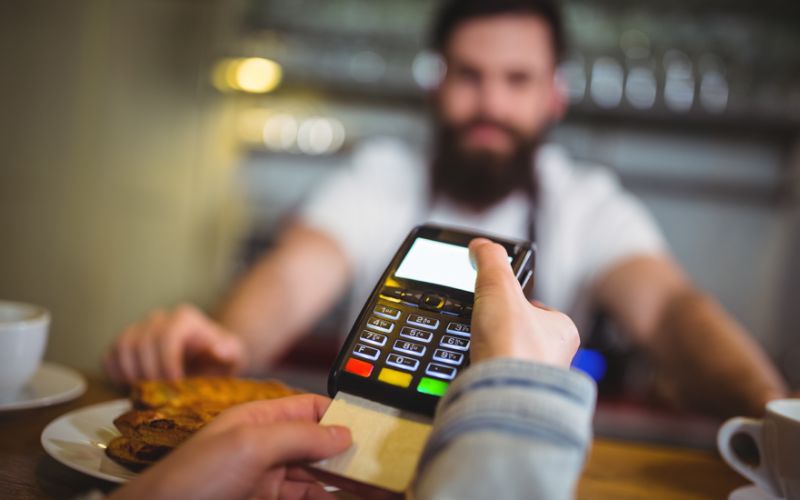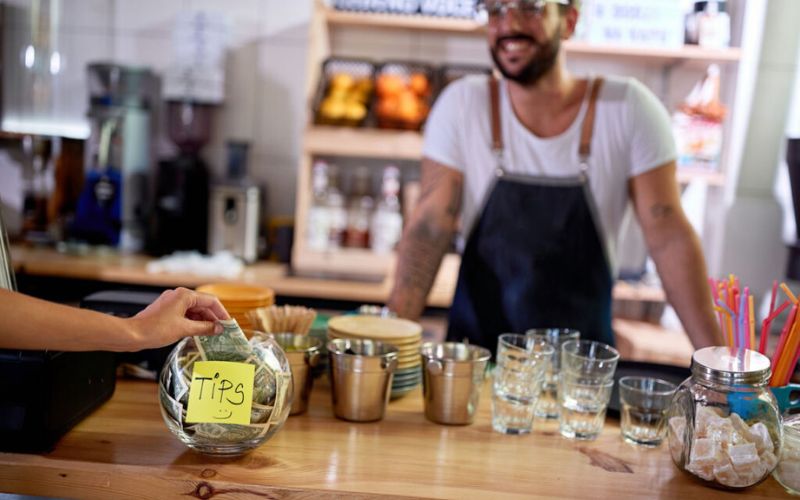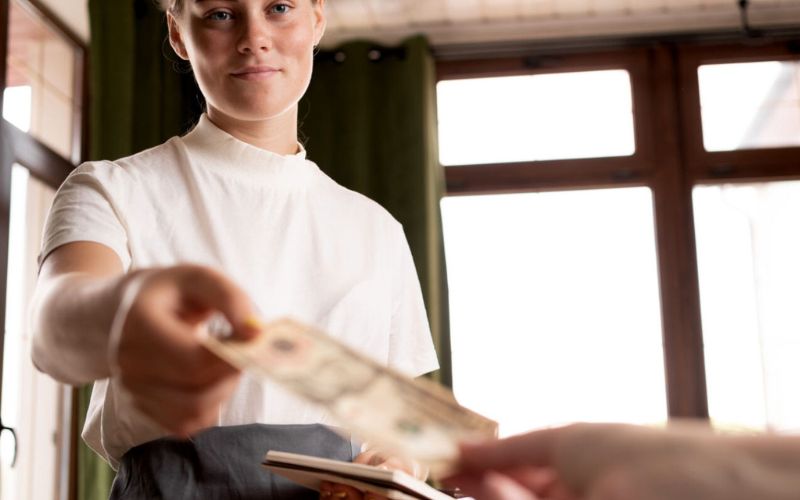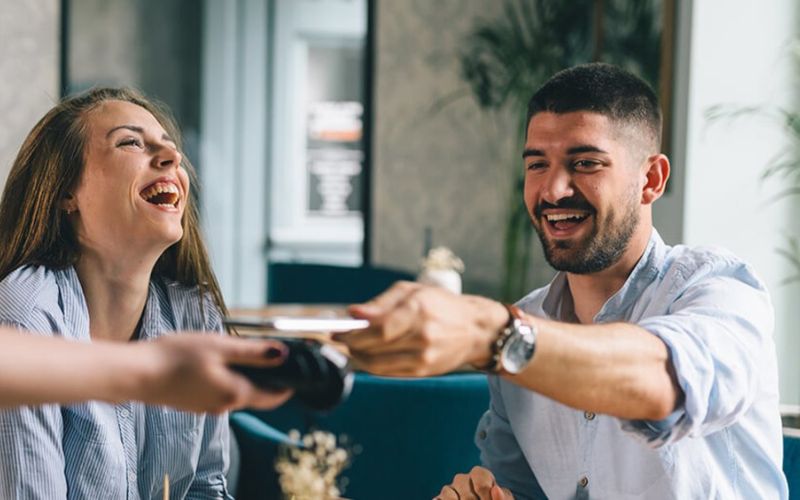According to
an Angus Reid poll from early 2023, 62 percent of Canadians say they have been
asked to leave a large tip in recent years. This is called "chip
inflation.
"
Canadians are used to tipping rates that start at around 10%, but if you're
handed a payment terminal with a recommended tip amount of 18% to 25%, you've
seen tip inflation take place. It will happen.
According to
a survey by Angus Reid, 2 in 5 Canadian girlfriends (42%) say high tips would
prevent them from eating out. But tips aren't the only reason restaurants are
becoming more expensive.
Food costs
are rising across the country due to supply chain issues, climate change, labor
shortages, and rising fuel prices, and those costs are being passed on to
customers in the form of more expensive menu items.
Guests are
now being cautious about tipping. In the early days of COVID-19, many of us
tipped beyond the usual 10-15% of her usual tip to help struggling restaurant
workers.
Restaurants
Canada, a non-profit organization representing the restaurant industry,
estimates that 13,000 restaurants have closed since March 2020, leaving many
Canadians unemployed.
This trend
looks set to continue. According to the same Angus Reid study, the percentage
of diners who tipped 20% or more increased from 8% in 2016 to 21% in 2023.
There will also be fewer people who give lower tips. In 2016, 44 percent of
Canadians reported tipping less than 14 percent at a sit-down restaurant, but
this year that number has dropped to 23 percent.
Many of us
were already tipping more than before the pandemic, but now that eating out is
becoming increasingly expensive, many Canadians are feeling tired and tipping
even more.
I'm hesitant
about that. This is now called "chip fatigue." How much and when
should you tip in Canada? Should you limit tipping to restaurants, or should
you also tip fast-food restaurants, take-out restaurants, coffee shops, and
cafes? To find out, I spoke to customers and industry insiders.
Read More: How to tip in South America?
How much do you tip in
Canada?
The amount
you should tip depends on many factors, including the type of establishment you
eat at, your budget, the quality of service, your attitude toward tipping, and
whether you abide by the regulations. If you want to stick to regular chips,
the Canadian approach (more on this later).
Toronto-based
videographer Matthew Massey says he tips between 10% and 13% at sit-down
restaurants unless the waitstaff goes overboard. In that case, I'd be willing
to tip a little more.
Mr. Massey
is aware that the recommended tipping percentage has increased, but he tends to
tip the amount of sales tax included on the bill (his HST in Ontario means he is
13%).
Massey grew
up in England, which he says has influenced his attitude towards tipping. In
the UK, he says, even if guests tip, they typically only pay 10% of the total
tip.

Ms Massey
said she was aware that people had become a little more generous with their
tips since COVID-19. He feels "a little bit guilty" about not tipping
more and wonders if, in many restaurants, a large portion of a waiter's income
comes from tips.
"From
an economic standpoint, if you add a tip on top of the $50 or his $60 bill, it
makes the meal even more valuable," says Massey. Although he feels guilty,
he says he can't afford to go anymore due to inflation and the already high
cost of eating out.
How do I leave a tip?
If you pay
in cash, you'll need to do the math. Here's a tip! Tips must be calculated on a
pre-tax basis. The tax is 15%, so your tip must match the tax on your bill. If
in doubt, ask your waiter or waitress. Tipping is not taboo.
When using a
debit or credit card, payment terminals will often ask you to select a tip
percentage (15%, 18%, or 20%). It will do the calculations for you.
Please note
that for large groups, mandatory gratuities may be added by default. Also, be
sure to check your bill, as restaurants in popular tourist destinations may add
a regular tip. In this case, you do not need to tip again.
What is the normal tip
amount in Canada?
Tipping is
common sense for Canadians, so it is customary to leave a tip if you receive
good service.
In sit-down
restaurants, "we always say 15 percent is the minimum to consider, and 10 percent
is a bit of an insult to service," says civility expert and CEO of
Civility Experts in Winnipeg. says Lewena Bayer.
Bayer says
that while tipping customs vary widely around the world, it's optional to show
your appreciation by doing something special. "A lot of the resistance
comes when people feel like they have to tip 18%, 20%, even 30%. And unless
they find a way to change themselves... No alternative options are presented to
the machine. she says. "People find it a little uncomfortable."
Should I tip when eating
takeout in Canada?
Should I tip
only at restaurants, or should I tip at cafes and fast food restaurants? What
about coffee chains like Starbucks and Tim Hortons?
If the machine
automatically asks for a tip for your coffee, "If you're an idiot or a few
quarters, you should be able to leave without being criticized, as long as you
can afford it and think it's appropriate." says Bayer. “He doesn't have to
automatically charge 18% on something he walks into and picks up. That doesn't
seem reasonable to me. ”

What about
pizza delivery guys to Instacart, Uber Eats, DoorDash, and more? You already
pay a delivery fee, and in the case of food delivery platforms, a service fee,
but these are paid to the company. With Door Dash and Uber Eats, 100% of the
tip goes directly to the driver, who then has to cover costs such as gas, car
insurance, vehicle maintenance, and sometimes parking.
Related: Best restaurants in New York
Should I tip for haircuts
and other personal services?
Blais Comeau
says he does tip for services like haircuts, manicures, pedicures, and taxi
rides, although not as much as in restaurants. He said that is common.
"Typically,
the percentage of all these services is about 10 percent," she said.
She
cautioned that it is not appropriate to give a monetary tip for treatment
prescribed by a doctor or for which the person providing the service could be
held liable. This also applies to tips for teachers, trainers, health care
workers, and health care workers. People whose tips can be mistaken for bribes.
Are there rules for
restaurants?
Tipping
etiquette is a two-way street, and Blais Comeau says that restaurant employees
should not intimidate customers into tipping and that restaurant workers should
not intimidate customers into tipping if they do not tip properly. He also said
that he should not be reprimanded.
She also
thinks it's a mistake for restaurants to label certain tip percentages on debit
terminals as "good," "excellent," or "excellent."
She said,
``The first time I was shown a device with the words 'wow' and 'awesome'
written on it, she thought, 'Oh my God.''' ``I'm a grown woman,'' she said.
"I walked into a restaurant knowing I was supposed to tip, but I
definitely don't want to be given any unnecessary instructions."

Tipping in bars and cafes
Tipping is
also appreciated in bars and cafes, but the percentage may be slightly lower.
For example, if you are served at a bar, it is customary to leave a tip of
15-18% of the bill. At cafes where you order at the counter and have food and
drinks brought to your table, it's a good idea to leave a small amount in the
tip jar.
Why Some Restaurants Ban
Tipping
Surprisingly,
some restaurant owners banned tipping and made tipping a habit from day one,
like Toronto's Asian fusion restaurant Then and Now. Some restaurants avoid it.
Since owner/manager Eric Y. Wang opened his business in February 2023, he has
never been asked for a tip at the checkout machine or automatically added to
his group bill.
Mr. Wang
said he has been in the restaurant industry for 12 years, and he has worked in
various positions including dishwasher, bartender, and waiter. Before he opened
'Then and Now', he was a restaurant manager.
These
experiences shaped his thinking about chips. "Simply put, it's unfair to
ask guests to pay a portion of the salaries that people need to succeed in
cities and elsewhere," Wang said.
He observed
that in some restaurants, people working in the kitchen and in management
positions earned less than servers serving customers because of the way tips
were distributed.
This means
that the servers keep the majority of the tips. Wang said this contributes to a
negative culture at some restaurants. This is because if a server makes a
mistake, managers and supervisors, who earn less due to the tipping system, may
become even more resentful, he said.

Wang added
that racial stereotypes can affect a customer's experience at a restaurant,
which is another reason why he banned tipping "then and now." added.
Some Tips to Get Great Tips
- Are you
interested in working in a restaurant? Here are some tips to get great tips.
- At the beginning
of the meal, introduce yourself. "My name is Jane and I'll be your
waitress today" might sound cheesy, but it's okay to make your Canadian
dining experience a little more personal.
- Laugh, laugh,
laugh!
- Fill the glass
while the customer reads the menu and continue to refill the glass while
eating.
- Please check in
periodically to ensure that everything is OK.
- Choose a relatively
upscale restaurant or bar. Tips are a percentage of the total bill. The more
expensive the food, the more expensive the tip.
- Eat out a few
times before applying for a job and watch other food service industry employees
provide great service.
Conclusion
If you
routinely lack the means to evaluate the hard work of your waiters, don't
worry.
Use the digital
tipping app for cashless tipping and tip tracking. The convenience of a
donation app can help with this.
Tip using
this tipping app that accepts non-cash payment methods. The good news is that
you can use this electronic chip app on mobile phones with Android or iPhone
operating systems.